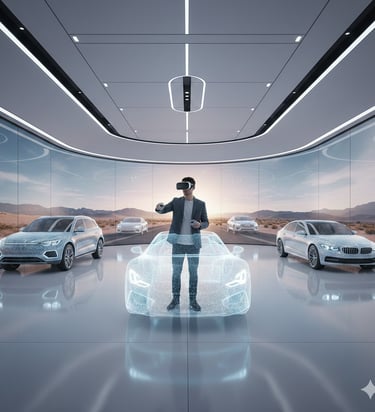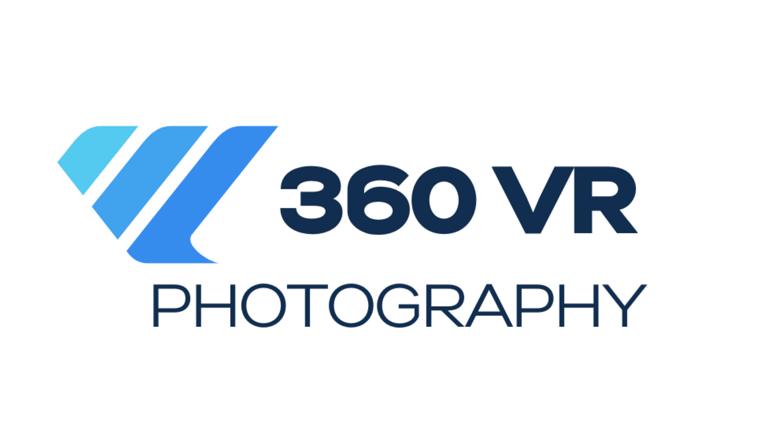VR in Automotive Showrooms: How Virtual Reality Is Transforming Car Dealerships
Discover how Virtual Reality (VR) is reshaping automotive showrooms with immersive car experiences, virtual test drives, 360° vehicle exploration, and digital dealerships. Learn how VR boosts sales, reduces costs, and enhances customer engagement.
THE FUTURE OF VIRTUAL REALITY
Viral Gala
11/21/20254 min read


VR in Automotive Showrooms: The Future of Car Dealerships 🚀
Remember the days of circling a crowded showroom, only to find the exact model or color you wanted wasn't available? Those limitations—space, stock, and high operating costs—are rapidly becoming a thing of the past. The automotive industry is embracing digital innovation, and Virtual Reality (VR) is leading the transformation from a static sales floor to a dynamic, immersive experience.
VR isn't just a technology upgrade; it's a powerful sales tool that creates emotional, interactive, and unforgettable buying experiences, redefining what it means to shop for a car.
1. Virtual Showrooms: Explore Every Model in Seconds
In a VR showroom, you step into a digital world where inventory is infinite. Customers can view a full range of cars—even models not physically available at the dealership. This means dealers can offer an unlimited inventory without needing extra space.
Key advantages that drive sales:
Display all variants, colors, and interiors.
Show discontinued or upcoming models months before launch.
Highlight technical features through engaging 3D animations.
Customers gain a realistic, 360-degree view of vehicles from any angle, giving them immense confidence in choosing the right model.
2. VR Test Drives: Experience the Car Without Leaving the Room
VR test drives are quickly becoming one of the biggest attractions in modern dealerships. Imagine taking your dream SUV for a spin on a winding mountain road or testing its rain-handling capabilities—all from a safe chair in the showroom.
Benefits of a virtual spin:
Safe and controlled environment for all-weather/scenario testing.
Customizable driving scenarios (highway, city, off-road).
Saves time during peak showroom hours.
Enhances customer engagement far beyond reading a spec sheet.
This immersive experience helps customers truly imagine themselves living with the car.
3. Personalization: Build Your Dream Car in VR
The era of flipping through faded brochures is over. With VR, customers can configure their car in real-time and see it come to life around them.
In a hyper-personalized VR session, customers can:
Change exterior color options instantly.
Try different alloy wheels and see the results.
Explore interior materials and stitching patterns.
Add/remove accessories and visualize lighting & ambience.
This level of personalization increases customer satisfaction and boosts upselling opportunities for dealerships.
4. VR for Technical Demonstrations: Explain Features Better
Explaining advanced features such as ADAS (Advanced Driver-Assistance Systems), complex safety systems, EV batteries, and autopilot is challenging with static diagrams. VR solves this by using interactive, X-ray animations. Customers understand complex technology through interactive visuals instead of verbal explanations.
VR can showcase:
Engine and battery animations (e.g., how the hybrid system works).
Crash-test simulations in a controlled, impactful manner.
Automatic parking demos.
Surround-view camera functions from the driver's seat.
When customers understand features better, they make faster, more informed decisions.
5. Remote VR Showrooms for Online Buyers
The shift to remote interactions is here to stay. VR enables dealerships to offer virtual visits from any location, transforming the digital sales funnel.
Customers can:
Explore cars from home using a simple headset or even a smartphone app.
Interact with a sales consultant who guides them through the virtual space.
Take virtual test drives remotely.
Finalize bookings online.
This helps dealerships reach out-of-city or premium buyers without requiring a physical visit.
6. Reduced Costs & Higher Sales Efficiency
VR's biggest impact on the bottom line is its ability to reduce overheads. It lessens the need for large display areas and multiple physical demo cars.
Cost savings include:
Reduced inventory requirement (fewer floor models needed).
Lower showroom space and associated utility needs.
Less wear & tear on physical demo vehicles.
Simultaneously, the excitement generated by a VR experience dramatically increases the chances of a booking.
7. The Future: AI + VR + Metaverse Car Showrooms
The next evolution is already underway, combining VR with AI and the Metaverse to create something truly revolutionary:
AI sales assistants explaining features in multiple languages.
Metaverse car launches and virtual events where users attend as avatars.
Digital twins for every vehicle model, constantly updated with real-world data.
This synergy will create the most immersive and interactive car-buying experience ever.
Partnership for the Digital Future
If you are ready to transition your dealership into the future, companies like 360 VR Photography specialize in creating these next-gen digital automotive experiences.
We provide the expertise to transform your inventory into stunning, interactive virtual assets.
Frequently Asked Questions (FAQ)
Q: Is the VR experience realistic enough for a major purchase like a car?
A: Yes. Modern VR technology (especially when using high-resolution 3D scans and models) offers highly photorealistic environments. While it cannot replace the tactile feel of driving, it is unparalleled for visualizing scale, interior space, lighting, and all customization options before the final physical test drive.
Q: What is the main challenge of implementing VR in a dealership?
A: The primary challenge is often the initial investment in high-quality hardware (headsets and powerful computers) and the creation of high-fidelity digital assets (3D car models). However, these upfront costs are quickly offset by reduced operational expenses and increased sales efficiency.
Q: Can a VR Test Drive actually replicate real-world driving physics?
A: VR Test Drives utilize sophisticated software that simulates real-world physics, road conditions, and sound design to provide an authentic sense of the car's performance. While the user is not physically moving, motion simulators (when used) and high-quality visuals create strong immersion, effectively conveying driving dynamics and noise levels.
Further Reading & Resources
VR Applications in the Industry: Get a high-level overview of how this technology is changing multiple sectors, including automotive.
Industry Deep Dive: Read about the broader applications of AR & VR in the entire automotive lifecycle, from design to the showroom.
Customer Perspective (Reddit Discussion): See what potential buyers are saying about the possibility of purchasing a car entirely through a virtual experience.
To see one of these cutting-edge solutions in action, check out a video showcasing a modern virtual showroom experience.
Here is the detailed contact information in bullet points:
Name: Viral Gala
Company: 360 VR Photography
Contact Number: 9920322366
Websites:



Experience
Engaging virtual tours for real estate and events.
Innovative
info@360vrphotography.in
+91 9920322366
